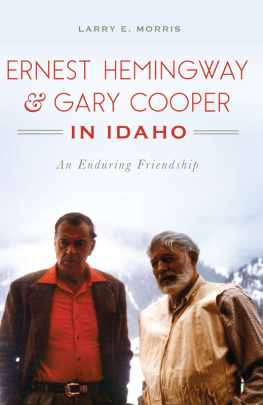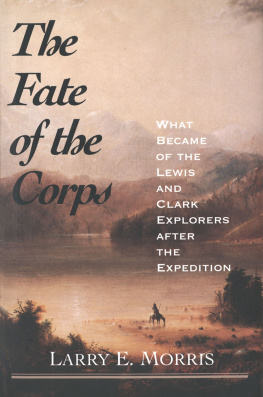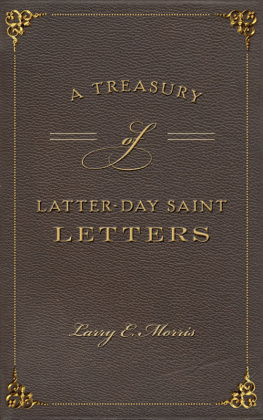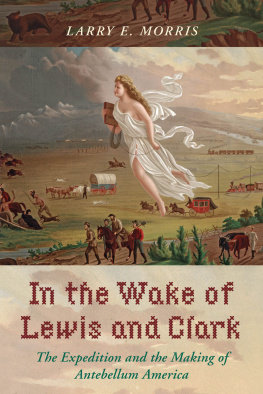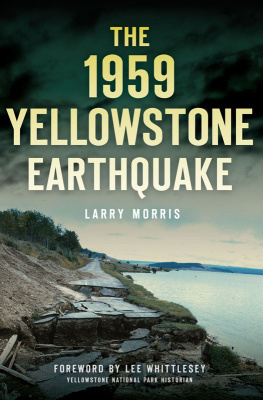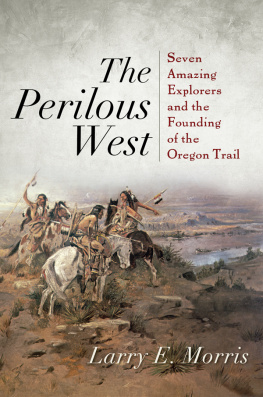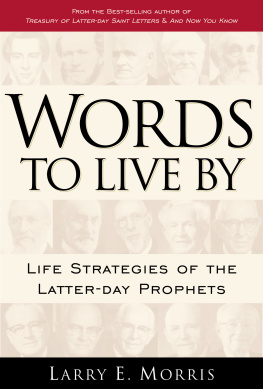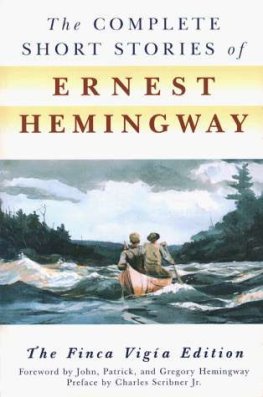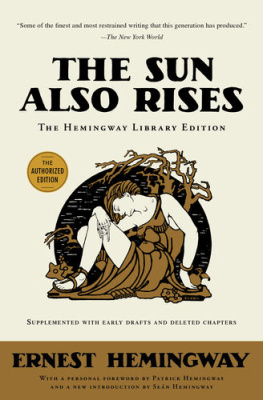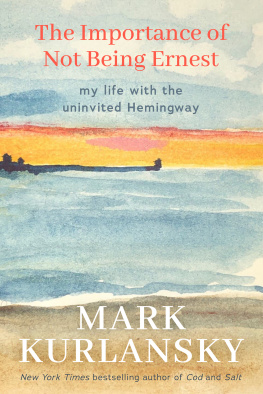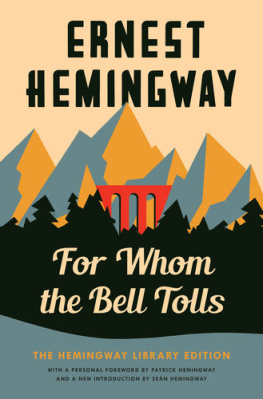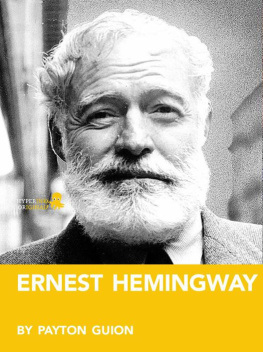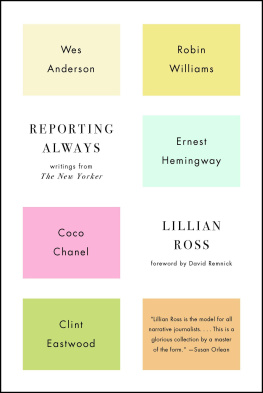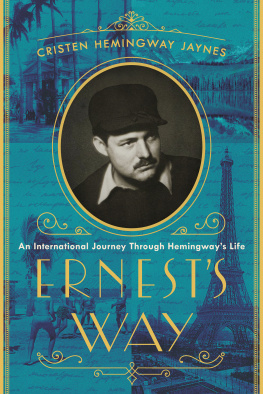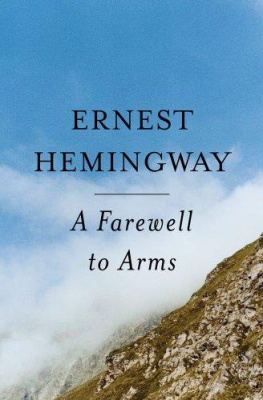
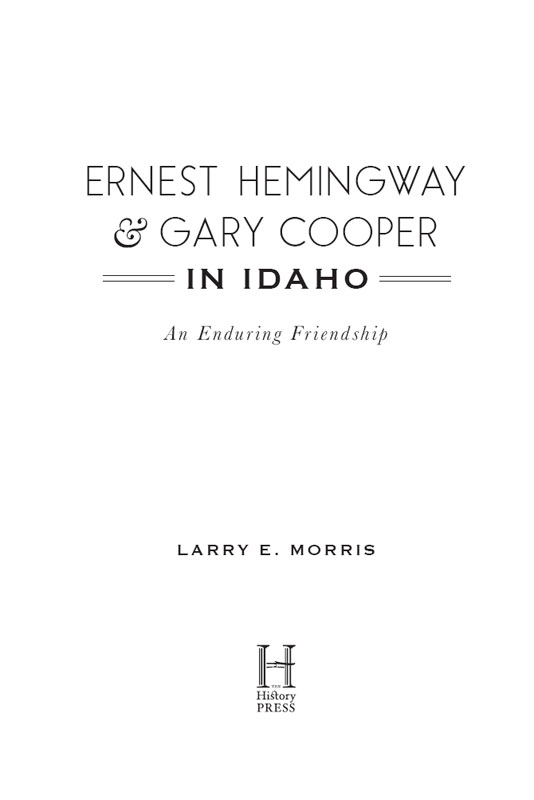
Published by The History Press
Charleston, SC
www.historypress.net
Copyright 2017 by Larry E. Morris
All rights reserved
First published 2017
e-book edition 2017
ISBN 978.1.43966.243.4
Library of Congress Control Number: 2017940945
print edition ISBN 978.1.46713.718.8
Notice: The information in this book is true and complete to the best of our knowledge. It is offered without guarantee on the part of the author or The History Press. The author and The History Press disclaim all liability in connection with the use of this book.
All rights reserved. No part of this book may be reproduced or transmitted in any form whatsoever without prior written permission from the publisher except in the case of brief quotations embodied in critical articles and reviews.
Loving some oneis the most important thing
that can happen to a human being.
Ernest Hemingway, For Whom the Bell Tolls
ACKNOWLEDGEMENTS
My thanks go to the following individuals and institutions: Mary Tyson, the Community Library Regional History Department, Ketchum, Idaho; Rachel Phillips, Gallatin History Museum, Bozeman, Montana; Lory Morrow and Kendra Newhall, Montana Historical Society, Helena, Montana; Connor Anderson and Laurie Austin, John F. Kennedy Presidential Library, Boston; Stephen Ferguson, Brianna Cregle and AnnaLee Pauls, Princeton University Library, Princeton, New Jersey; and the staff at Brigham Young Universitys Harold B. Lee Library, Provo, Utah, where I spent countless hours and found virtually every book I needed.
Thanks are also due to the researchers and writers, both past and present, whose work was so valuable in my own research, particularly Carlos Baker, Jeffery Meyers, Brewster Chamberlin, Ruth A. Hawkins, Bernice Kert, Michael Reynolds, James M. Hutchisson and Paul Hendrickson, as well as to John Mulholland, writer and director of the documentary Cooper and Hemingway: The True Gen, a valuable resource and always a joy to watch.
On a summer night in 1970, at the Atomic City Hilton on the Idaho desert, my friends Bob Schoch, Bruce Didesch and John Long and I were talking when John mentioned a book he had read but I had never heard of: Papa Hemingway. Based on his recommendation, I read the book, a memorable experience that laid the foundation for serious research of Hem and Coop forty-five years later. Thanks, Ling.
A book like this needs a good mapI am indebted to Blake Gulbransen for producing an excellent one.
It is a pleasure to work with the editors at The History Press, and I am especially grateful for the help of Artie Crisp and Ryan Finn.
My special thanks to Maria Cooper Janis for her kindness and encouragement.
I am thankful to my sister, Lorraine, and my brother, Kent, for their interest in my work and for their lifelong friendship.
As always, I tremendously appreciate the love and support of my wife, Deborah, and our children and their spousesWhitney, Justin and Jen, Courtney and Adam and Isaac and Tahlia. Among the nine of us, we have read quite a variety of Hemingway books and seen quite a variety of Cooper films. Our combined experience also includes several visits to Hems burial site (and Pounds birthplace) in central Idaho, driving all of Highway 93 between Missoula and Ketchum (a key part of the route of Hems last journey) and even reading A Moveable Feast in Paris.
CHAPTER 1
BEST OF ALL HE LOVED
THE FALL
On the afternoon of Tuesday, September 1, 1939, forty-year-old Ernest Hemingway drove his black Buick Special two-door convertible along Yellowstone Lake to Fishing Bridge and then descended the meandering Yellowstone River through the meadows, groves, rolling hillsand bison herdsof Hayden Valley. The serene Yellowstone Park setting offered a stark contrast to the news reports he had been listening to on his car radio: the German Luftwaffe, supported by battleships and infantry, had launched a massive invasion of Poland.
Hem, as several friends called him, had driven from Key West, Florida, to hunt and fish with his three sonsJack, fifteen; Patrick, eleven; and Gregory, seven. First he was scheduled to pick up Jack, staying at Holm Lodge, a dude ranch west of Cody, Wyoming, with his mother, Hadley Richardson (Hemingways first wife), and her husband of six years, Pulitzer Prizewinning journalist Paul Scott Mowrer. When Hem discovered that they were fishing at Grebe Lake, he went in search of them. Near Canyon Village, he followed a gravel fire road that got him within two miles of the lake. He parked his car next to another that presumably belonged to Paul, got out and started up the trail. Not long after that, as he rounded a stand of lodgepole pines, he came face to face with Hadley and Paul, who were surprised but delighted to see him. Hem had known Paul in Europe in the 1920s and liked him. Not only that, but he could also see that Hadley was happy. He would later write to her that she and Paul made a fine-looking pair on the trail.
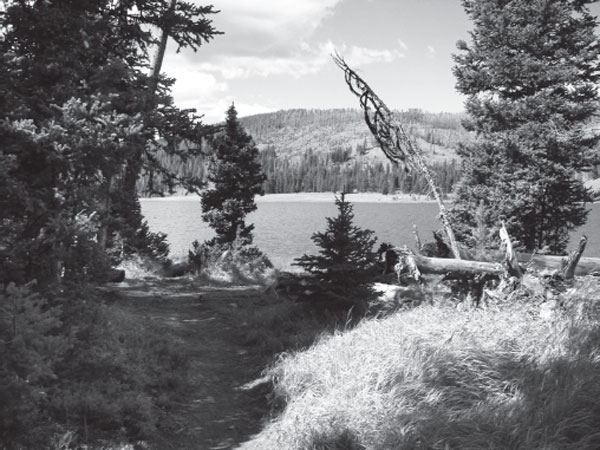
Grebe Lake, Yellowstone National Park, where Hemingway saw Jack, Hadley and Paul Mowrer in 1939. Photo by Tim Angeli, 2009.
Hadley had been devastated by Hems divorce in 1927 and had not seen him for eight years, but this was a memorable and congenial reunion. Hadley, now forty-seven, had gained weight but looked healthy and attractive, her hair still red and her face unlined. Hem, by contrast, had aged considerably, with his weight gain accompanied by graying hair and a countenance that reflected such ailments as high blood pressure, blurred vision and the effects of heavy drinking.
As Hem, Hadley and Paul updated one another on recent events, Jack, who had lingered at the lake long enough to catch a few more Arctic grayling, came up the path. I was delighted by the sight of Papa, Paul, and Mother sitting on the edge of the trail talking animatedly, he wrote almost fifty years later. By that time, the conversation had turned to events in Europe, with Hem and Paul both convinced that a long war and U.S. involvement were both inevitable. It was wonderful for me to see my mother, my father, and Paul all together talking like that, added Jack. This was the first time since the Paris days that they had been together, and, as it turned out, it was the last time ever.
The four of them continued their conversation as they returned to the cars. Then, after bidding farewell to Hadley and Paul, Hem and Jack went north and east to a Wyoming ranch called the L-Bar-T, frequented by the Hemingway family throughout the 1930s. A day or two later, Toby Bruce, a jack-of-all-trades employee of Hems, arrived with Patrick and Gregory, who had spent the last two months at a camp in Connecticut while their motherand Hems estranged wife, Pauline Pfeiffertoured France, Switzerland and Austria with a friend.
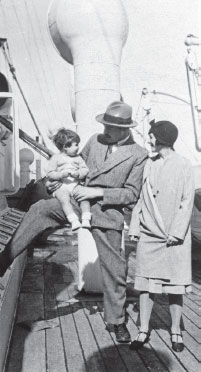
Ernest Hemingway, Pauline Pfeiffer Hemingway and Patrick Hemingway onboard a ship, 1929. Princeton University Library.
Hem and the boys had barely settled in when Pauline called from New York and said she wanted to join them at the L-Bar-T. Hem was surprisedthat had not been part of the plan. For the past two years, he and Pauline had spent less and less time together, teetering on the edge of permanent separation. Pinpointing the genesis of their falling-out was hardly difficult.
Next page
